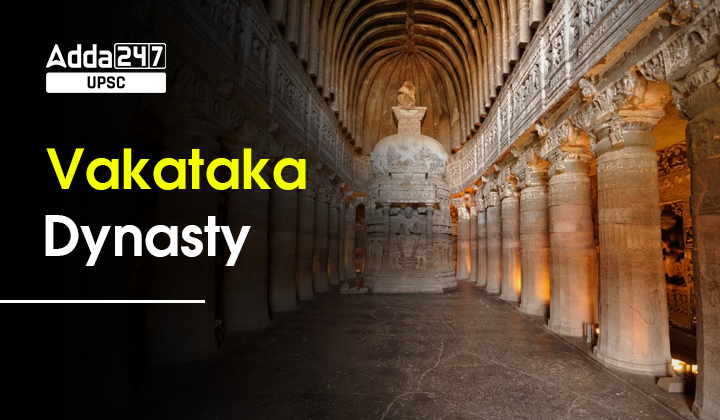Table of Contents
The Vakataka Dynasty was an ancient Indian dynasty that ruled over a major part of India between the 3rd and 5th centuries CE. This dynasty is significant in Indian history for its contributions to art, architecture, literature, and religion. In this article, we will explore the history, founder, capital, and rulers of the Vakataka Dynasty.
History of Vakataka Dynasty
The Vakataka Dynasty was founded by Vindhyashakti, who ruled from 250 to 270 CE. He was succeeded by his son Pravarasena I, who ruled from 270 to 330 CE. During his reign, the Vakataka Dynasty expanded its territories and established its capital at Nandivardhana, present-day Nagardhan in Maharashtra. The Vakataka Dynasty continued to rule over a major part of India until the end of the 5th century CE. Below are some important points on the Rise of Vakataka Dynasty.
- The Vakataka Dynasty rose to power in central India in the early 3rd century CE.
- The founder of the dynasty, Vindhyashakti, is believed to have been a feudatory of the Satavahanas, who ruled much of India before the Vakatakas.
- The Vakatakas gradually gained power and territory under Vindhyashakti and his successors.
- The first significant ruler of the dynasty was Pravarasena I, who expanded the kingdom and established his capital at Nandivardhana.
- Pravarasena I was succeeded by his son, Rudrasena I, who is known for his patronage of the arts and the construction of Buddhist cave temples at Ajanta.
- Rudrasena I was succeeded by his son, Prithvisena I, who continued to expand the kingdom and fought against the Gupta Empire in the north.
- The Vakataka Dynasty reached its peak under the reign of Narendrasena, who is known for his military campaigns and patronage of literature and the arts.
- Despite its relatively short reign, the Vakataka Dynasty left a lasting impact on Indian culture and art, especially through its patronage of the Ajanta caves.
Founder of the Vakataka Dynasty
Vindhyashakti was the founder of the Vakataka Dynasty. According to legends, he was a Brahmin who performed a great sacrifice and received a boon from Lord Shiva. With this boon, he defeated the Shakas and established his dynasty. Vindhyashakti was known for his military prowess and his patronage of the arts.
Capital of the Vakataka Dynasty
The Vakataka Dynasty had its capital at Nandivardhana, present-day Nagardhan in Maharashtra. The city was strategically located at the intersection of major trade routes and was a center of commerce and culture. The Vakataka rulers built several impressive structures in Nagardhan, including temples, palaces, and fortifications.
| UPSC Exam-Related Study Notes | |
| Mauryan Empire |
Chola Dynasty |
| Anglo-Maratha War | 16 Mahajanapadas |
| Pala Empire |
Gupta Empire |
Rulers of the Vakataka Dynasty
The Vakataka Dynasty had several notable rulers who made significant contributions to Indian history.
| Ruler | Reign | Notable Achievements |
|---|---|---|
| Vindhyashakti | Early 3rd century CE | Founder of the Vakataka Dynasty |
| Pravarasena I | c. 270 – c. 330 CE | Expanded the kingdom and established the capital at Nandivardhana |
| Rudrasena I | c. 330 – c. 355 CE | Patronage of the arts and construction of Buddhist cave temples at Ajanta |
| Prithvisena I | c. 355 – c. 380 CE | Continued expansion of the kingdom and fought against the Gupta Empire in the north |
| Veragupta | c. 380 – c. 385 CE | Known from inscriptions, little else is known |
| Kumaragupta I | c. 385 – c. 390 CE | Ruled for a short period, little is known |
| Buddhagupta | c. 390 – c. 415 CE | Expanded the kingdom and patronized Buddhism |
| Purugupta | c. 415 – c. 440 CE | Ruled for a long period, little is known |
| Kumaragupta II | c. 440 – c. 460 CE | Expanded the kingdom and patronized Buddhism |
| Narendrasena | c. 460 – c. 480 CE | Reached the peak of the dynasty, known for military campaigns and patronage of literature and the arts |
| Prithvisena II | c. 480 – c. 500 CE | Last significant ruler, continued patronage of the arts and fought against the Kalachuri Dynasty |
| Sarvasena | c. 500 – c. 510 CE | Ruled for a short period before the dynasty was conquered by the Kalachuris |
| Note: The exact dates of the reigns of some Vakataka rulers are not clear and vary in different sources. | ||
Some of the most prominent rulers of the dynasty are:
Pravarasena I (270-330 CE)
Pravarasena I was the son of Vindhyashakti and the second ruler of the Vakataka Dynasty. During his reign, the dynasty expanded its territories and established its capital at Nandivardhana.
Harishena (c. 475-500 CE)
Harishena was one of the last rulers of the Vakataka Dynasty. He was known for his patronage of the arts and his support of Buddhism. He built several impressive structures, including the Ajanta Caves, which are considered to be some of the finest examples of Indian art.
Rudrasena II (c. 385-390 CE)
Rudrasena II was a powerful ruler of the Vakataka Dynasty who extended his empire into the Deccan region. He was known for his patronage of literature and his support of the Jain religion.
Prithvisena I (c. 330-355 CE)
Prithvisena I was the son of Pravarasena I and the third ruler of the Vakataka Dynasty. He was known for his military campaigns and his patronage of the arts.
Legacy of the Vakataka Dynasty
The Vakataka Dynasty’s patronage of the arts led to the development of a unique style of architecture and sculpture that is still admired today.
- The Vakataka Dynasty was known for its patronage of the arts, especially the construction of the Ajanta cave temples, which are now a UNESCO World Heritage site and one of the finest surviving examples of ancient Indian art.
- The Vakatakas also contributed to the development of classical Sanskrit literature, with many notable works being produced during their reign.
- The Vakataka Dynasty played an important role in the political and cultural history of central India, helping to establish a regional identity and shaping the broader historical narrative of the subcontinent.
- The Vakataka Dynasty also had a significant impact on the religion of India, with Buddhism playing an important role in their patronage of the arts and literature.
- The Vakataka Dynasty’s decline paved the way for the rise of other regional powers, including the Chalukyas and the Kalachuris, who built on the foundation laid by the Vakatakas and continued to shape the political and cultural landscape of India.
- The Vakataka Dynasty’s legacy is evident in the many surviving inscriptions, sculptures, and architectural works that can be found throughout central India, offering a glimpse into the rich and complex history of the region.
Deline of Vakataka Dynasty
- The decline of the Vakataka Dynasty began in the late 5th century CE, with the death of Narendrasena, the last significant ruler of the dynasty.
- Following Narendrasena’s death, the kingdom was weakened by a series of succession disputes and external invasions.
- The Kalachuri Dynasty, which had been a vassal of the Vakatakas, gradually gained power and influence in central India, eventually challenging the Vakataka Dynasty’s authority.
- The Kalachuris launched a series of successful military campaigns against the Vakatakas, weakening the dynasty’s hold on the region.
- The Vakataka Dynasty was eventually conquered by the Kalachuris in the early 6th century CE, bringing an end to their reign.
- Despite their decline, the Vakataka Dynasty’s legacy continued to shape the cultural and political landscape of central India for centuries to come, with their contributions to art, literature, and religion enduring long after their rule came to an end.



 TSPSC Group 1 Question Paper 2024, Downl...
TSPSC Group 1 Question Paper 2024, Downl...
 TSPSC Group 1 Answer key 2024 Out, Downl...
TSPSC Group 1 Answer key 2024 Out, Downl...
 UPSC Prelims 2024 Question Paper, Downlo...
UPSC Prelims 2024 Question Paper, Downlo...





